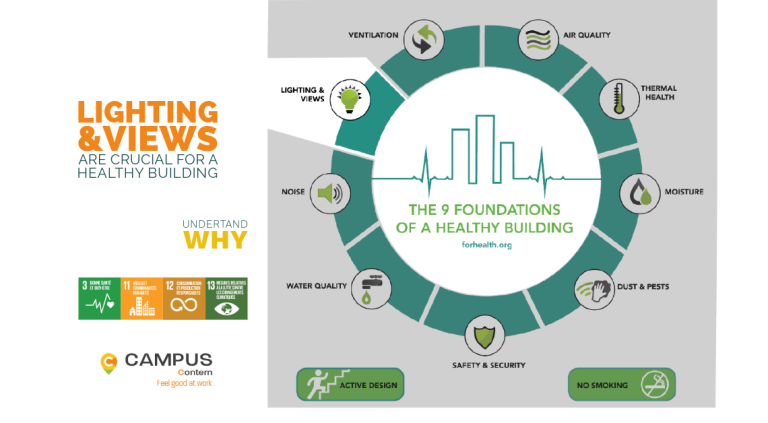Lighting and views in buildings are critical for human health and well-being, influencing both visual and non-visual responses.
Humans spend **90% of their time indoors**, yet indoor lighting often lacks the intensity, spectrum, and timing of natural daylight, while views to nature are frequently obstructed.
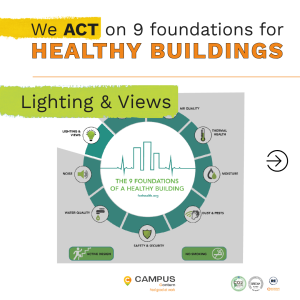
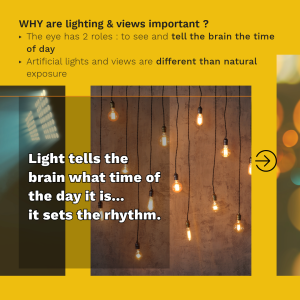
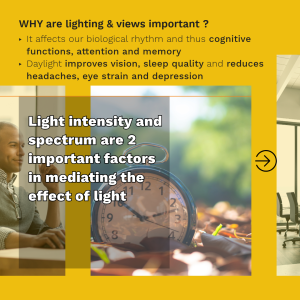
Impact of Light on Health
Light regulates circadian rhythms, which synchronize our biological clock with the 24-hour day. Disrupted circadian rhythms can cause sleep disorders, reduce cognitive function, and increase risks of chronic diseases like diabetes, heart disease, and certain cancers.
Light also has direct effects on alertness and mood. Exposure to blue-enriched light (300 lux, 5500K) in the morning enhances cognitive performance and concentration, while lower intensity, warm lighting in the evening supports better sleep. For instance, office workers exposed to blue-enriched fluorescent light reported better alertness, mood, and sleep quality.
Benefits of Daylight and Views
Daylight exposure offers diverse health benefits, improving sleep quality, reducing symptoms of depression, and even lowering blood pressure. Workers with access to daylight report reduced sleepiness and better physical activity.
For children, classroom views of green landscapes improve stress recovery and mental performance, supporting the **biophilia hypothesis**, which emphasizes our innate connection to nature.
Strategies for Healthy Lighting and Views
To optimize well-being, buildings should incorporate high-intensity blue-enriched lighting during the day and low-intensity, warm lighting in the evening.
Access to natural daylight and windows with views of greenery further enhances health, reducing mental fatigue and improving mood. Incorporating **biophilic design**, such as integrating natural elements into indoor spaces, can bring nature indoors, supporting physical and mental health.
By prioritizing balanced lighting and access to views, buildings can enhance occupants’ health, mood, and productivity while fostering a deeper connection to the natural environment.
@CAMPUS CONTERN it means :
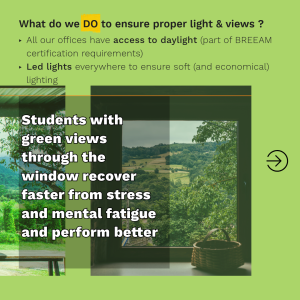
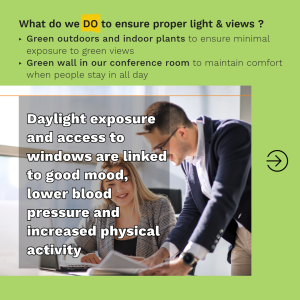
- All of our offices have direct access to daylight, as part of the prerequisites of the BREEAM certification
- Our indoors lights are LED to ensure both energy performance and adequate luminosity
- We take care of our green outdoors and have even dressed our parking emergency exit from grey to an image of a green forest
- We have a majestic green wall in the conference room to enhance the comfort of people staying in all day.
Our Goal :
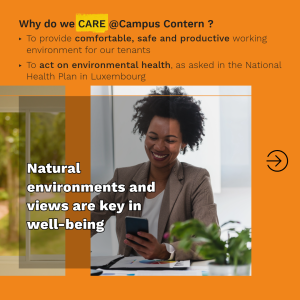
- To make sure that our tenants have a safe and healthy work environment. They spend a lot of time in our buildings, it is our responsibility to do our best to reduce the causes of fatigue, absenteeism and to foster concentration and performance
- To protect our tenants from chronicle diseases and play our part in the National Health Plan
Source : “The 9 foundations of a healthy building” Harvard School of Public Health – forhealth.org
